What is World Orca Day?
World Orca Day (14th July) was founded by Dr. Ingrid Visser, a world-renowned orca expert who has dedicated her life to studying and protecting these wonderful animals. This day was created for celebrating orcas (or killer whales), raising awareness of their conservation threats, and catalysing action to improve protection for this species. To celebrate World Orca Day, let’s explore some interesting orca behaviours and see how this relates to their conservation.
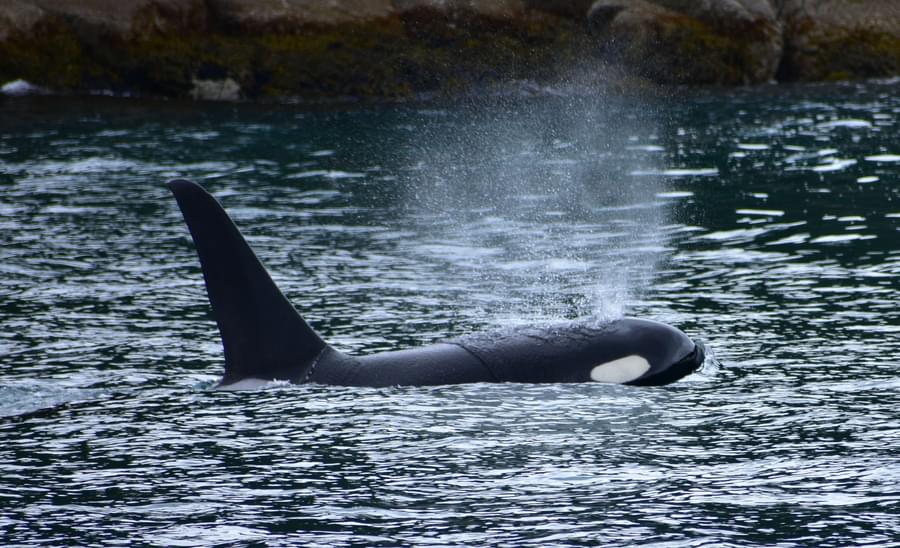
Apex Predators
Orcas, the undisputed rulers of the seas, embody both power and grace. They can expertly dispatch great white sharks (1), take on the formidable leopard seal, (2) and have even been observed hunting blue whales (3), the largest animal on our planet. With no natural rivals, these apex predators occupy the highest position in the marine food web and play a vital role in maintaining the health of marine ecosystems. Their astonishing hunting prowess, iconic markings, inquisitive nature, and regal beauty make them a beloved and respected species by many.
Ecological Diversity
Orcas are found in all oceans from icy polar regions to the tropics (4) and exhibit diverse ecological adaptations. Although they are currently classified as one species, Orcinus orca, there are significant variations between populations in terms of behaviour, social structures, dietary preferences, foraging techniques, genetics, and vocal repertoires. These differences have led to at least ten different ecotypes being described so far, each with their own distinct characteristics.
There is a growing body of evidence to suggest that rather than being one species, there are likely to be multiple different species and subspecies of orcas globally, although this requires continued research for further clarification (5). Understanding their taxonomy is crucial from a conservation perspective, as different species or subspecies will have unique ecological needs and may have different responses to human-induced threats.
Foraging Behaviour
Although orcas globally feed on a diverse array of prey species, there are regionally distinct populations that exhibit highly specialised foraging behaviours, often involving a limited range of prey species (6,7). Populations in Norway use a variety of strategies to feed on herring, with one of the most commonly observed being carousel feeding (8). During carousel feeding, orcas cooperatively herd a school of herring into a tight ball close to the surface (8) flashing their white underside and producing air bubbles to corral the fish (6). They then use their tails to stun the fish and eat them one by one (8).
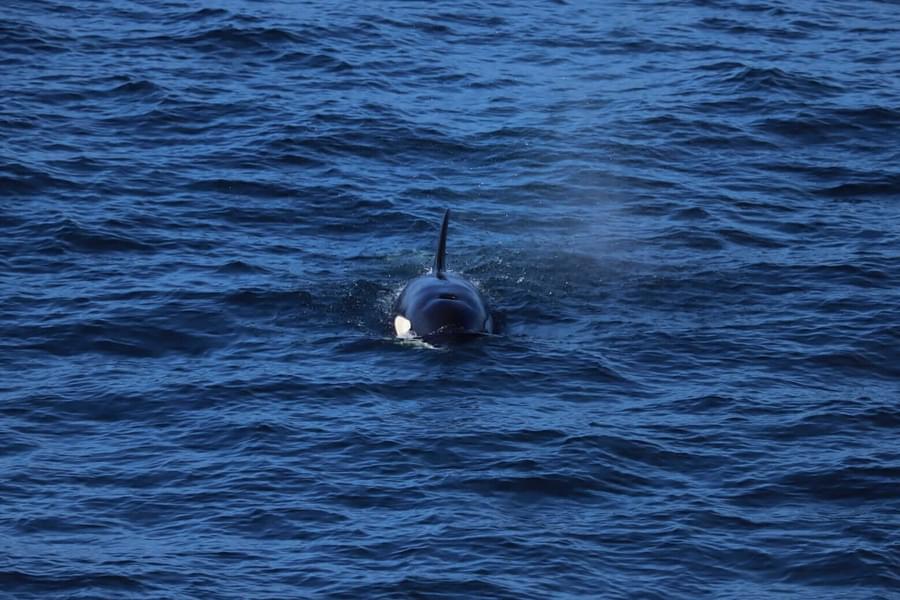
In New Zealand waters, some populations are specialist stingray hunters (9) - a risky endeavour, given the prey’s venomous barb! These orcas venture into shallow waters and pin the rays to the seafloor (9). They will then grasp the ray in their mouths and carefully handle it to avoid injury from the spiny barb. It is thought they also produce bubbles to dislodge any rays hiding under rocks or seagrass.
Others use an extremely high-risk strategy known as intentional stranding. Along the Patagonian coast of Peninsula Valdéz, a small population of orcas use this method to capture South American sea lions (10). With this foraging behaviour, they mainly target inexperienced seal pups close to the water’s edge (11). The orcas rapidly accelerate towards the shore and grasp hold of their prey, temporarily stranding themselves in the process (10,11). They then use the waves to manoeuvre themselves from the surf back into deeper waters along with their prey (11).
The foraging behaviours observed among different orca populations are characterised by incredible precision, coordination, and stamina. These behaviours require many years of practice to master and are culturally passed down from experienced elders to younger generations.
Conservation efforts must consider the unique dietary needs and foraging behaviours specific to each population, ensuring the protection of important habitats and prey species. Having such a specialised diet comes at a cost, as this can make orcas particularly vulnerable to changes in prey availability and habitat. Put simply, it is unknown whether those with a longstanding preference for seals would suddenly switch to hunting fish should their prey no longer be available, and similarly, whether fish-hunting orcas would switch to seals should their prey become scarce (7). These factors are vital to consider, particularly in the face of climate change, which is triggering alterations in the movements of a range of species, and overfishing, which is reducing the availability of prey.
Social Dynamics
Orcas are incredibly social, relying on close familial bonds for survival (12). They live in complex social units known as pods, which vary considerably in size and structure among different populations. For example, mammal-eating specialists, such as the Bigg’s/transient orcas of the North Pacific, typically live in smaller, more fluid family groups of around 2 to 6 (7) that can change in structure depending on hunting needs and prey availability. In contrast, fish-eating orcas, like the resident pods in the same region, form larger, stable matrilineal (maternally related) groups of 10 to 25 that can consist of up to four generations and remain stable over time, with offspring remaining within their pod for life (7,13).
Despite overlap in their territories, these populations do not intermingle or breed with each other (7). Given their historical separation and lack of breeding, it is uncertain whether this would change in the near future. This may apply to other populations as well. Research has already highlighted that the subantarctic type D orca population are one of the most inbred mammals ever recorded, suggesting that breeding does not occur between these orcas and other populations (14) (read more about Antarctic ecotypes here). Therefore, to effectively conserve orcas across their global range, it is vital to protect each distinct population, as it remains unknown to what extent breeding occurs between them. Furthermore, disrupting their social dynamics could have cascading effects for the entire pod, and ultimately could impact their long-term survival.
However, as orcas are rarely seen in some regions and inhabit inaccessible areas like offshore waters and polar regions, much of their social organisation remains poorly understood for many populations. Continued research is needed to gain a deeper understanding of their social structures in order to develop effective conservation strategies.
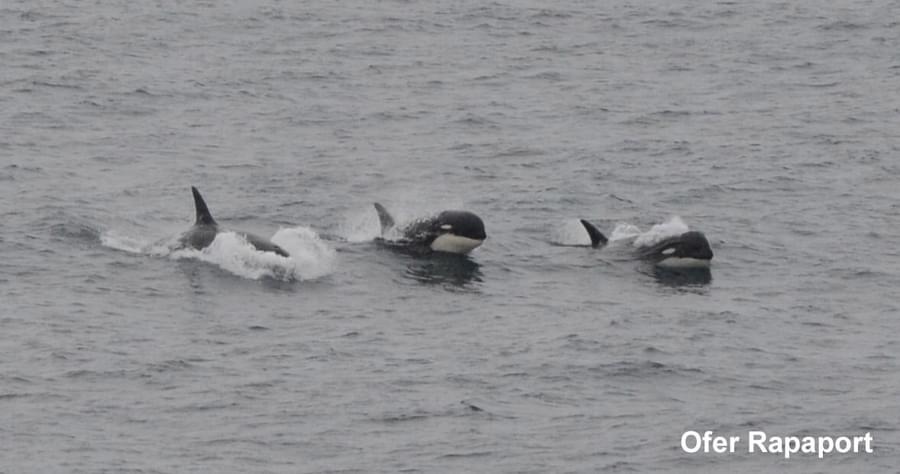
Vocal Behaviour
Orcas produce three types of vocalisations: echolocation clicks, whistles, and burst-pulsed calls (15,16). Echolocation clicks are used for navigation and prey detection and acts as an in-built sonar to mentally map their environment (15). Whistles are thought to function as short-range communication between individuals, particularly while socialising (15, 16, 17).
Burst-pulsed calls are the most common form of vocalisation and are thought to have an important role in coordinating group behaviour, and in group recognition (15,16,17). These calls have a distinct harmonic structure and are unique to each population, with some pods known for “sheep-like” calls and others for high pitched “kitten-like” calls.
There are significant differences in the type and usage of vocalisations between populations. To avoid detection by eavesdropping prey, mammal-eating orcas hunt in silence as their prey can hear them at great distances (7, 15,16). Only once an attack is fully underway or a kill has been made do they become more vocal (7). On the other hand, fish-eating orcas are vocal during hunts, as their prey lack advanced hearing capabilities, making detection less likely (15,16).
Orcas, as with all cetaceans, rely heavily on sound for their survival. This makes them particularly vulnerable to the impacts of vessel disturbance and noise pollution. Excessive noise from boats can drown out their communication and disrupt important survival behaviours.
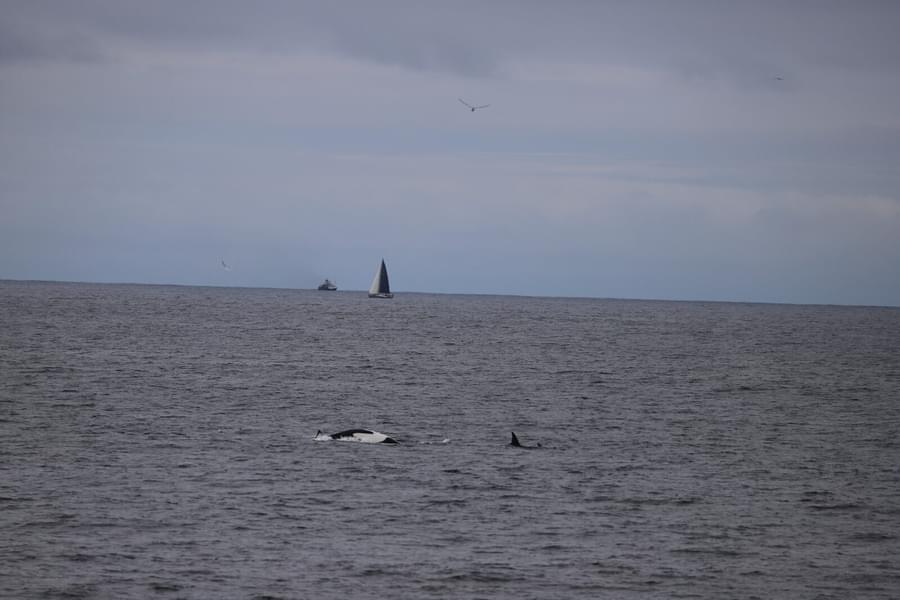
Conservation
These incredible animals are facing a wide range of human-induced threats including overfishing of prey, chemical pollution, vessel disturbance, noise pollution, entanglement in fishing gear, and climate change. Due to their regionally specific differences, there is no one-size-fits-all approach to their conservation. It is essential that we continue to research and better understand how unique populations will be affected and establish methods of keeping them intact. By tailoring conservation efforts to the needs of each orca population, we can help to ensure their survival for future generations. Protecting their habitats and prey, preserving their cultural traditions, and mitigating human impacts are all vital steps in safeguarding the future of these sovereigns of the sea.
Orcas command respect, evoke awe, and stir deep emotions within us unlike any other animal, and have captured the human imagination for centuries. However, there remains numerous unanswered questions about many aspects of their behaviour, and how they will adapt to our rapidly changing world. Only through targeted conservation and continued research can we ensure that orcas continue to reign supreme in our oceans.
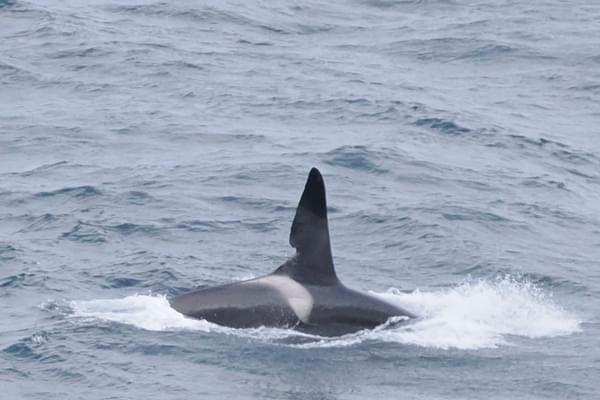
Watching whales and dolphins living free in the wild is one of the most awe-inspiring sights imaginable, but did you know you can experience it right on your doorstep? ORCA's ever-popular Sea Safari trips are back and bigger than ever with NINE opportunities in 2024 to travel from Rossle or Plymouth and see whales and dolphins living right on our doorstep. To join one of these incredible mini-cruise, just visit www.orca.org.uk/watch and book your place so that you can see incredible marine wildlife in our waters.
References
Towner, A.V., Kock, A.A., Stopforth, C., Hurwitz, D. and Elwen, S.H., 2023. Direct observation of killer whales preying on white sharks and evidence of a flight response. Ecology, 104(1).
Visser, I., Smith, T., Bullock, I., Green, G., Carlsson, O.L. and Imberti, S., 2008. Antarctic peninsula killer whales (Orcinus orca) hunt seals and a penguin on floating ice. Marine Mammal Science, 24(1), pp.225-234.
Totterdell, J.A., Wellard, R., Reeves, I.M., Elsdon, B., Markovic, P., Yoshida, M., Fairchild, A., Sharp, G. and Pitman, R.L., 2022. The first three records of killer whales (Orcinus orca) killing and eating blue whales (Balaenoptera musculus). Marine Mammal Science, 38(3).
Forney, K.A., Wade, P.R. and Estes, J.A., 2006. Worldwide distribution and abundance of killer whales. Whales, whaling and ocean ecosystems, 145, p.162.
Morin, P.A., McCarthy, M.L., Fung, C.W., Durban, J.W., Parsons, K.M., Perrin, W.F., Taylor, B.L., Jefferson, T.A. and Archer, F.I., 2024. Revised taxonomy of eastern North Pacific killer whales (Orcinus orca): Bigg’s and resident ecotypes deserve species status. Royal Society Open Science, 11(3), p.231368.
Higuera-Rivas, J.E., Hoyos-Padilla, E.M., Elorriaga-Verplancken, F.R., Rosales-Nanduca, H., Rosenthal, R. and Urbán, J., 2023. Short Note Orcas (Orcinus orca) Use Different Strategies to prey on rays in the Gulf of California. Aquatic Mammals, 49(1).
Ford, J.K. and Ellis, G.M., 2014. You are what you eat: foraging specializations and their influence on the social organization and behavior of killer whales. Primates and cetaceans: Field research and conservation of complex mammalian societies, pp.75-98.
Matika, A.F., Jourdain, E., Cade, D.E., Karoliussen, R. and Hammond, P.S., 2022. Feeding characteristics and prey profitability in five herring‐feeding killer whales (Orcinus orca) in northern Norway. Marine Mammal Science, 38(4), pp.1409-1424.
Visser, I., 1999. Benthic foraging on stingrays by killer whales (Orcinus orca) in New Zealand waters. Marine Mammal Science, 15(1), pp.220-227.
McInnes, J.D., Buckmaster, J.N., Cullen, K.D., Mathieson, C.R. and Tawse, J.P., 2020. Intentional stranding by mammal-hunting killer whales (Orcinus orca) in the Salish Sea. Aquatic Mammals, 46(6), pp.556-560.
Vila, A.R., Campagna, C., Iñíguez, M. and Falabella, V., 2008. South American sea lions (Otaria flavescens) avoid killer whale (Orcinus orca) predation.
Williams, R. and Lusseau, D., 2006. A killer whale social network is vulnerable to targeted removals. Biology letters, 2(4), pp.497-500.
Parsons, K.M., Balcomb Iii, K.C., Ford, J.K.B. and Durban, J.W., 2009. The social dynamics of southern resident killer whales and conservation implications for this endangered population. Animal Behaviour, 77(4), pp.963-971.
Foote, A.D., Alexander, A., Ballance, L.T., Constantine, R., Galletti Vernazzani Muñoz, B., Guinet, C., Robertson, K.M., Sinding, M.H.S., Sironi, M., Tixier, P. and Totterdell, J., 2023. “Type D” killer whale genomes reveal long-term small population size and low genetic diversity. Journal of Heredity, 114(2), pp.94-109.
Riesch, R., Barrett-Lennard, L.G., Ellis, G.M., Ford, J.K. and Deecke, V.B., 2012. Cultural traditions and the evolution of reproductive isolation: ecological speciation in killer whales?. Biological Journal of the Linnean Society, 106(1), pp.1-17.
Deecke, V.B., Ford, J.K. and Slater, P.J., 2005. The vocal behaviour of mammal-eating killer whales: communicating with costly calls. Animal Behaviour, 69(2), pp.395-405.
Thomsen, F., Franck, D. and Ford, J.K., 2002. On the communicative significance of whistles in wild killer whales (Orcinus orca). Naturwissenschaften, 89, pp.404-407.

